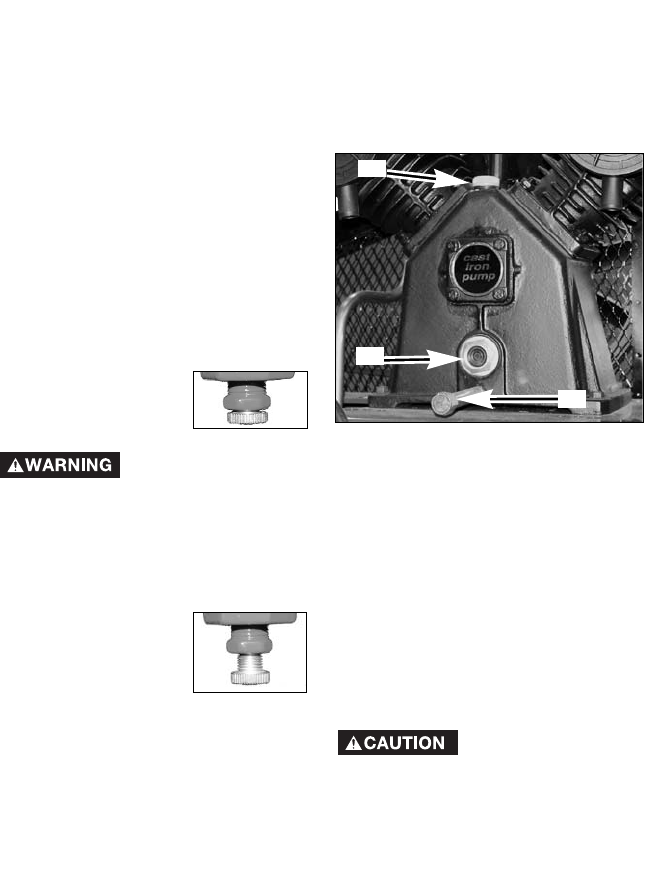
17-ENG D27042
To Drain Tank
NOTE: Operation of the air
compressor will cause condensation
to build up in the air tank. Always
drain tank on a washable surface or
in a suitable container to prevent
damaging or staining surfaces.
1. Set the On/Auto/Off lever to
"Off".
2. Close the globe valve.
3. Remove the air tool or accessory.
4. Open the globe valve and allow
the air to slowly bleed from the
air tank until tank pressure is
approximately 20 psi.
5. Close the globe valve.
6. Drain water from
air tank by opening
drain valve on
bottom of tank.
Risk
of
Bursting. Water will condense in
the air tank. If not drained, water
will corrode and weaken the air
tank causing a risk of air tank
rupture.
7. After the water has
been drained,
close the drain
valve. The air
compressor can
now be stored.
NOTE: If drain valve is
plugged, release all air pressure. The
valve can then be removed, cleaned,
then reinstalled.
Open Drain
Valve
Closed Drain
Valve
Checking
1. The oil level should be to the
middle of the sight glass (C).
2. If needed remove oil fill plug (A)
and slowly add oil until it reaches
the middle of the sight glass.
Changing
1. Remove the oil fill plug (A).
2. Remove the oil drain plug (B) and
drain oil into a suitable container.
3. Replace the oil drain plug (B) and
tighten securely.
4. Sowly add compressor oil until
the oil level is in the middle of
the sightglass (C). NOTE: When
filling the crankcase, the oil flows
very slowly into the pump. If the
oil is added too quickly, it will
overflow and appear to be full.
Risk of Unsafe
Operation.
Overfilling with oil will cause
premature compressor failure. Do
not overfill.
5. Replace oil fill plug (A) and
tighten securely.
Oil
NOTE: Use an oil specifically
formulated for use in an air
compressor, such as Porter-Cable
PAS1 air compressor oil. Oil may be
found at the store where the air
compressor was purchased.
NOTE: Crankcase oil capacity is
approximately 48 fluid ounces (1.4 L).
C
B
A


















